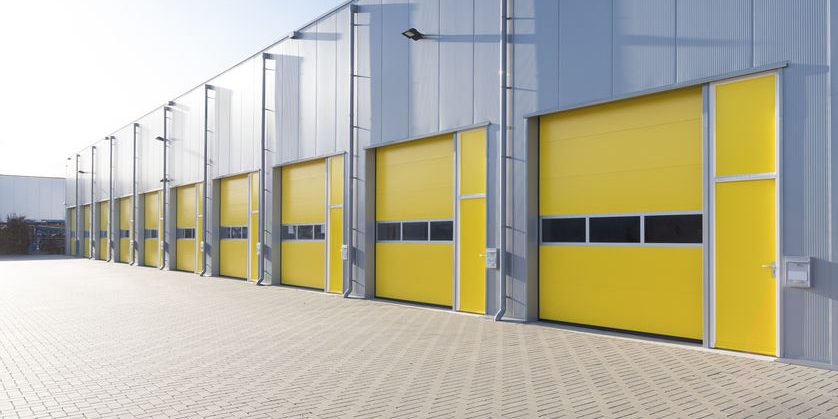Even the most durable construction material needs a little love. Metal buildings are low-maintenance, but they are not no-maintenance. While the money and time required to keep your building in good condition is minimal, maintaining the integrity of your structure does require a bit of effort on your part.
A regular maintenance schedule will keep your structure operating safely and efficiently. Without one, you may decrease its durability,resulting in more costly repairs and replacements down the road. Follow these tips to increase the longevity of your metal building.
- Conduct a Full Inspection Twice a Year
Routine inspection is the first step to maintaining your metal building. Potential problems are nipped in the bud with regular checks. The longer something deteriorates, the costlier it is to repair or replace. Catching issues early saves you money and time.
Establish a schedule for maintenance and take good notes as you inspect the structure. If you feel you can do it yourself,great! Otherwise hire a professional contractor who is trained to conduct such inspections.
- Check Insulation
Make sure your insulation is not exposed to air and is not compromised in any way. Consistent air exposure increases the risk of water damage. If your insulation becomes contaminated with water, it will decrease its ability to properly protect your structure. Water also makes your insulation susceptible to mold and rust. Along with water issues, check that insulation is free from pests, birds or other critters who have taken advantage of any vulnerable exposed areas.
Note any place where your insulation is damaged or unprotected and resolve the problem immediately. The longer it is left unrepaired, the greater the chance that the problem will spread.
- Let it Snow…But Not on Your Roof
Snow is deceptively problematic for your metal building. A substantial snow creates significant stress on your structure. If you feel that the snowfall collected on your roof is above your roof’s allowable snow level, take action to remove it.
Wearing the proper shoes and attire, and equipped with the appropriate tools, climb onto your roof and set about the process of clearing it of the snow. Note any places where it is not safe to stand such as skylights or clear panels. Also, beware any places where the roof has buckled in any way. If the integrity of the roof is questionable do not proceed.
If all looks alright, carefully shovel off the snow from the outside working in. Mind that you miss the gutters when removing the snow as too much snow collected on them may cause them to collapse.Do not scrape off the snow all the way to the metal panels. Leave a couple of inches on the roof. Should your shovel touch the metal panels you may scrape or otherwise damage them.
- Give it a Shower
Consistently washing your building inside and out greatly increases its lifespan. Grime accumulates naturally and is no issue if regularly attended to, but to leave your structure too long without a good scrub down will cause dirt and muck to build up to potentially problematic levels.
Any sign of residue means it’s time for a cleaning. If the majority of the building looks good, leave it alone and just do a spot-clean. If it’s been a while since you’ve given it a wash, do a comprehensive cleaning. One cup of ammonia mixed with five gallons of water is a great DIY cleaning solution, but there are also plenty of options on the market that will keep your building looking fresh.
Finish your cleaning job by power washing the structure. A good rinse ensures that all residual cleaning products are removed.You don’t want them sitting on the surface of your building as they will just cause more unwanted buildup over time.
- Clean and Check Gutters and Drains
Water is meant to pass right on through. If it gets stuck and sits too long, it will cause damage. Clogged gutters lead to rust and mold. Regularly clear your gutters of any debris by manually removing any blockages or employ a power washer if you have a particularly large obstruction to deal with.
- Check Hinges and Seals
If any doors seem to be a little sticky or creaky, give the hinges a bit of oil to get them back in working order. If any hinges, nuts or bolts are rusted or corroded, replace them.
Also, be mindful of any door seals –including garage or rolling doors – that have broken or are not aligning properly with the door frame or ground. Nothing should be leaking or showing signs of rust or mold. Broken seals can cause your heating and cooling bills to skyrocket, so save yourself money by repairing or replacing any compromised seals.
- Touch Up the Paint
Anywhere on your structure where the paint has been scratched needs to be retouched to avoid water damage, rust or mold. If you have a reserve of the original paint used, great. If not, contact your building provider to find out which paint you need to do the touch ups. Once you have the proper paint, start with a layer of primer. Once the primer has dried and you have applied the paint, keep the area clear of any hedges, tools or other debris that might disrupt the drying process.
A little bit really does go a long way when it comes to meeting the needs of your structure. Your metal building will last for many years with few repairs and very little attention paid to preservation. Support it with some regular maintenance and it will support you for decades to come.

